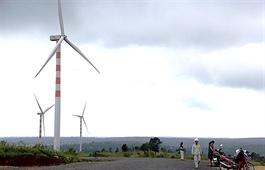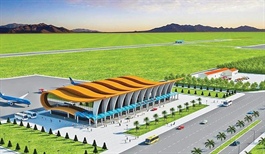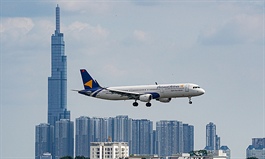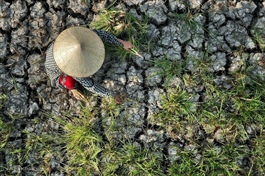Keeping opportunities fresh in fruit and vegetable exports
Keeping opportunities fresh in fruit and vegetable exports
The export of Vietnamese fruit and vegetables is worth hundreds of millions of US dollars each year but is so far impeded by the lack of appropriate preservation technology. As regional countries are also upping their game, Vietnam may see incentives for upgrading the lifetime of its produce when exporting to foreign markets like the United States.
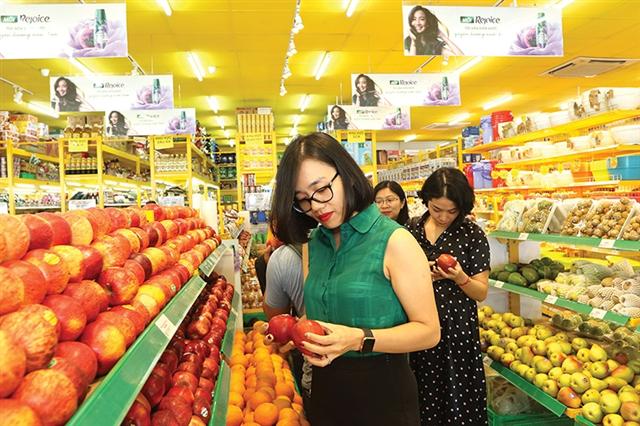
Vietnam earns hundreds of millions of US dollars from the export of fresh produce, but preservation techniques still lag behind other nations. Photo: Le Toan
|
The pandemic has raised the need to increase the preservation of fresh fruit, but weaknesses in technology and methods have made it difficult for Vietnamese products to add value for exports to the US market.
The huge supply of fresh fruit throughout the year is a significant advantage for Vietnamese exporters and Pham Quoc Bao, director Sancopack JSC, hopes to sell more products with modified atmosphere packaging (MAP), a technology that equips products with selective air permeability, limiting the respiration of the fruit, and preventing rapid ripening.
Prices for MAP products are only a third of imported equivalents while their storage efficiency amounts to 90 per cent compared to imported products. Sancopack also buys packaging films from Germany and Australia and resells them to domestic exporters.
The Vietnam Institute of Chemistry researched and applied the MAP technology first in 2016, presenting some advantages in preservation methods for exports as MAP was one of the first post-harvest preservation techniques.
Nevertheless, Vietnam has not achieved significant milestones in preservation methods for exports, as MAP only partially solves related issues. Weaknesses in preservation are the biggest barrier to the export of fresh fruits, including fresh dragon fruit – one of Vietnam’s main export products.
In the Mekong Delta province of Tien Giang, dragon fruit prices fell sharply in November due to large oversupply. According to Nguyen Van Huong from Cho Gao district, the price of red dragon fruit fell to VND5,000-6,000 (21-26 US cents) per kilogramme, while the fruit during the high season usually sells for VND10,000 (43 US cents) per kg.
Huong is worried that the price of dragon fruit is on a general downward trend. Last year, Cho Gao expanded its plantation area for the popular fruit to about 6,500 hectares, following Tien Giang’s development project started in 2008.
Meanwhile, Vietnam’s dragon fruit exports in the first 11 months of 2020 decreased by 11.7 per cent compared to the same period in 2019, only reaching $3.01 billion, according to the Agency of Foreign Trade under the Ministry of Industry and Trade (MoIT).
Competitive market
On the contrary, the agency also stated that the global demand for dragon fruit is growing at about 4 per cent per year, with the trend expected to continue in the coming years. However, this market is shared among regional markets such as Thailand, South Korea, Taiwan, and China.
China boasts just over 35,500ha of plantations, equivalent to the area in Vietnam, thus representing a direct competitor in dragon fruit export, the agency warned.
Overseas consumers meanwhile seem to prefer using fresh fruit as a solution to increase natural resistances amid the pandemic. However, processes like fruit irradiation before the import into the US are not always running smoothly.
As the pandemic broke out last year, the US Animal and Plant Health Inspection Service ordered its supervisors in Ho Chi Minh City to return home, thus stalling operations in Vietnam until their return.
Dang Phuc Nguyen, general secretary of the Vietnam Fruit and Vegetables Association, said that according to US regulations, fruits exported to its market are required to be supervised at irradiation facilities. The fact that Vietnam has only one irradiation plant, Nguyen said, has presented “many shortcomings and impedes the development of a local competitive edge.”
While the Vietnamese fruit and vegetable sector is struggling with internal problems, neighbours from Thailand continue to profit off preservation technology supported by the government and invested in by several local businesses. A system of four irradiation plants located in key agricultural areas is helping Thai fruit compete in export markets.
Nguyen Dinh Tung, general director of produce exporter Vina T&T, said, “We are losing to Thailand in terms of seed and preservation technology.”
Vietnam’s technology seems even more inferior compared to China’s, as the latter owns a synchronous system of very good methods enabling a long storage period. Even though Vietnamese dragon fruit can currently be kept fresh for up to 35 days, this period is still far behind that of Chinese competitors.
Developing standards
The prerequisite for increasing exports to the US remains to meet food safety standards, testing plants and animals, and monitoring processing. Vietnamese fruit can still regain share in the North American market when following the Thai example.
That country’s preservation technology for agricultural exports comes mostly from the government’s efforts in promoting its products all around the world, as well as from strictly overseeing and meeting international standards.
While exports of fresh fruit to the US offer great opportunities for local exporters, the most obvious change in the overseas market is the shift from canned fruit and vegetables to fresh produce. The cost for trade promotion of fresh products may be higher in the US than in some other markets but could be compensated if the manufacturer can sell directly to the supermarkets without a middleman, with payment cycles also being shorter.
Data from the Ministry of Agriculture and Rural Development (MARD) showed that in 2019, the output of fruit exported to the US amounted to roughly 13,000 tonnes, while it reached nearly 6,500 tonnes in the first six months of 2020.
Currently, 80 per cent of Vietnam’s preservation technology is similar to that of Thailand. And despite the latter’s more developed system, Vietnam may have one advantage as its farmers can grow crops all year round, while their Thai counterparts only have seasonal crops.
Nevertheless, Vietnamese fruit exporters cannot conquer the world alone but need to be supported by the government through dedicated research in preservation technology.
In 2008, when Vina T&T exported the first dragon fruit to the US, almost the entire contents of the first two containers were completely ruined due to the irradiation and the lack of proper preservation methods. After more than 10 years, the company only reached a preservation period of 35 days. “We have learned our lesson for over a decade, and have paid the price,” Tung said.
Preservation can be seen as equally important as manufacturing, processing, and packaging. But so far, neither the MARD nor the MoIT has focused on preservation technology and not seen it as a key factor for the export of agricultural products.
While investment in research on preservation technology may be required, successful implementation could enable a common standard for enterprises to share and follow instead of letting them self-research everything.
Located in a tropical monsoon climate, Vietnam is one of the countries with the richest and most diverse vegetables and fruit in the world. Every year, the country earns hundreds of millions of US dollars from the export of fresh produce.
However, export hopes remain limited, mainly due to the quick deterioration rates of these products after harvest – with waste accounting for more than 20 per cent of total output.
Nguyen Duy Lam, director of the Centre for Food Quality and Safety Research said, “it is necessary to standardise processes in production, harvest, pre-processing, storage, packaging, and distribution,” adding that in Vietnam, “fruit after harvest is often piled up and rarely classified by size and quality.”
Meanwhile, at orange farms in the US, only half of the fresh oranges are selected for sale and are the same size, colour, and quality. The rest is then delivered to juice factories.
“If the Vietnamese fruit and vegetables industry can comply with the standards of import markets, the value of its agricultural products will certainly rise to a higher level,” Lam argued.






